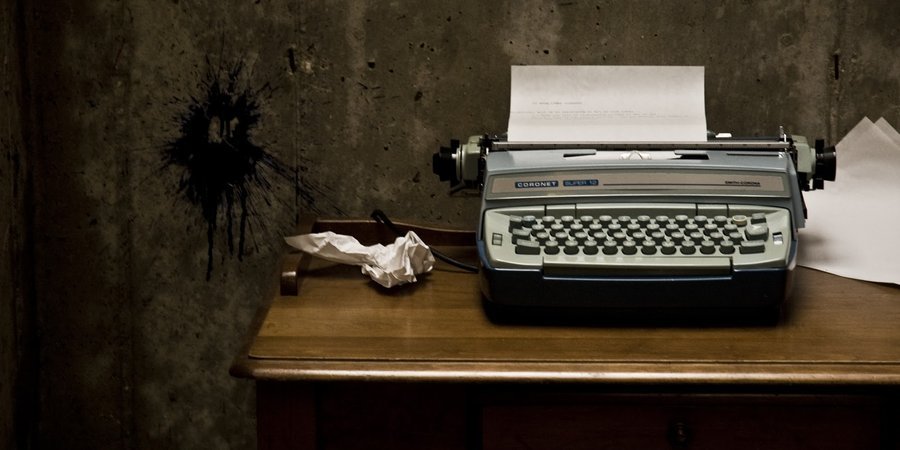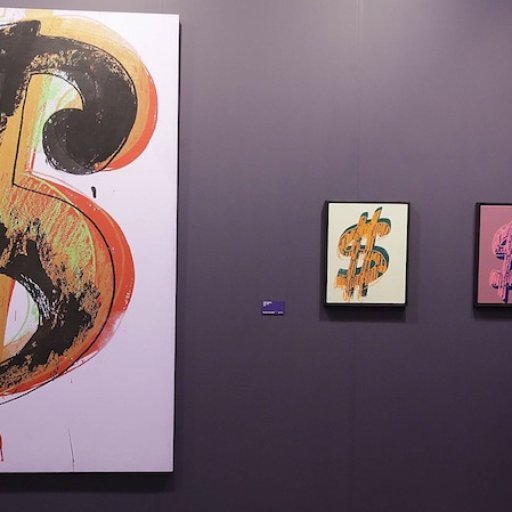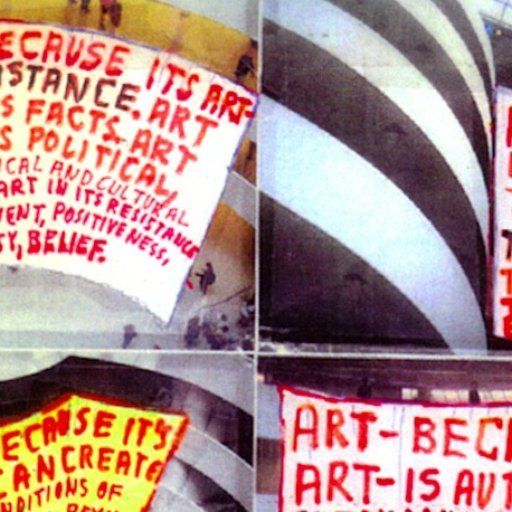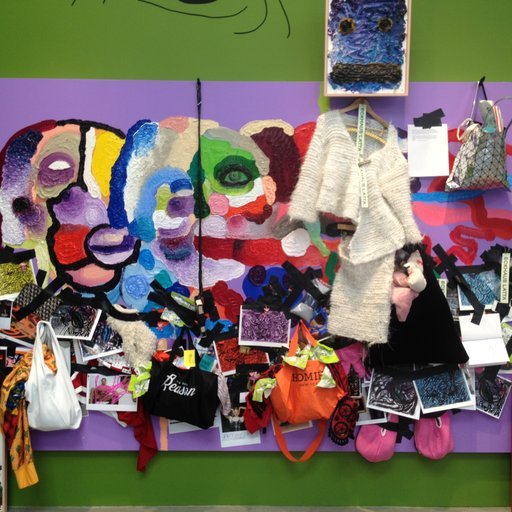We begin 2014 with a resolution, and that is to leave all the unfinished business of 2013 behind—to be done with it, to turn our back on it and give it not another thought. After all, we don't want to start the new year by getting distracted by all the unexplored themes and missed opportunities of the last 12 months. Or do we?
Who are we kidding? We do. Here are the top ten topics for "See Here" columns that I just never got around to in 2013 (I was too busy musing on such topics as "Art Is Magic,""Art Is Weird," and "Why I Love Art Fairs"). The brilliant ideas below were abandoned for all the best reasons—because I was too lazy to work them out properly, or because when I did I decided the idea was mistaken or stupid or not very interesting. Here I should also mention all the notes I wrote myself in states of momentarily consuming passion that turned out to be indecipherable later.
So let's go. These are columns that didn't make the cut.
1. Art That Makes You Ill. A slap in the face of spiritual aesthetics, this quest for the repellant would encompass abstractions that resemble skin diseases and Damien Hirst's pitch-black canvases encrusted with an inch-thick layer of dead flies (which a decade ago I wrote "fills the sense with a visceral breath of organic decay… evocative of the gaping mouth of hell"), as well as Matthew Barney's newest art epic, debuting later in 2014 at BAM, which features a gilded turd used as a dildo. Come to think of it, "shit art" is a category all to itself (Piero Manzoni, Gilbert & George, Paul McCarthy, Mike Kelley, to name a few), and it's not always completely off-putting. In his 1993 essay "The Fig Leaf Was Brown," the artist John Miller said his work of that period was characterized by "a brown excremental impasto" that reflected "art's underpinnings in a libidinal economy and commodity fetishism." Love it.
2. Art as Decor. Art can be transcendant, whatever that means, but exactly how do artworks function out in the world? During my dutiful visits to the all the design fairs at the Park Avenue Armory, I was always amused to take note of the kinds of artworks incorporated in the stylish displays of period and modernist furnishings. Along with Tamara de Lempicka and Harry Bertoia, included were relatively rare geometric paintings by the Abstract Expressionist sculptor Tony Smith and large-scale photos of Hirst's diamond-covered skull. If some art is favored as decor, so other art must be inappropriate for such use, or be suited only for specific spaces, like the bathroom or the kitchen. Or the art market.
3. Twitter and the Auction Experience. Walking down Madison Avenue in early November with a couple of people, I was able to provide a blow-by-blow report on a record-breaking art auction simply by reading the tweets of Wall Street Journal art scribe Kelly Crow. My wife was enthusiastic, but I didn't think I could get 800 words out of it.
5. Art Has STEM Envy. This idea comes from the art critic Peter Plagens, who applied it at a press breakfast to the slate of shows coming up at the New Museum. The descriptions in the press kit (which may well miss the essence of the art itself) were framed in terms drawn from the non-humanities, i.e. STEM, or science, technology, engineering and mathematics. Peter's sotto voce disquisition was fascinating, and I wish he'd write it.
6. Art Dealers Get Left Out. The Museum of Modern Art's exhibition of contemporary art that passed through the hands of dealer Ileana Sonnabend has occasioned some comment that perhaps a museum shouldn't be getting so cozy with an art dealer. In fact, the opposite is true: art dealers are almost always left out of current art hagiography. When my old boss Hans Neuendorf lent his collection of early erotic tableaux by Robert Graham to an exhibition at David Zwirner Gallery, I took the opportunity to puff the show with an interview with Hans about his early years with Bob, traveling with him and producing, showing, eventually buying all the works (few sold, back then). How revealing it was, in kind of a sad way, to read the exhibition catalogue's presentation of the same history—with the art dealer left out.
7. Big Girls. So much has been made of the huge White Elephant works by male artists in the last couple of years—a 45-foot-tall brown balloon dog, say—I was wondering if art by women measured up, so to speak, and if not why not. Many examples come immediately to mind, notably Maya Lin's 1972 Vietnam Veterans Memorial, which compares favorably to male efforts in practically every way. Also relevant, I think, was the art world's general indifference to the 1997 exhibition by my old pal Cara Perlman of a giant inflatable boulder—I always remembered it as a potato—on the roof of the former Deitch Projects garage at 18 Wooster Street. It seems that neither the sponsorship of the estimable Jeffrey Deitch nor the encomiums of critic Carlo McCormick ("a profound wonder imbued with quiet meditation," a "primal esthetic act breathing life into stone") could overcome the neglect of institutional memory. Perlman now makes documentary films.
8. Art Critics Are Idiots. Why would I write that? So many reasons, all hackneyed. It's a ludicrous profession, first of all, and no way to make a living—it's what poets do as a sideline. I could go on. But most importantly, the temptation to make fun of all my colleagues for their bad judgments, well, that would be plain suicidal.
9. The Art Market Is an Elaborate Ponzi Scheme. Back in 2007, I delivered a talk on this notion to a meeting of the Canadian Art Museum Directors Association in Montreal. The basic proposition I floated is that the scheme's "greatest fools" are the taxpayer-supported museums, which end up with all of the overvalued assets. I was mortified when Hugh Hildesley, one of the plummiest of Sotheby's auctioneers, came in and caught the tail end of my remarks, which he scoffed at later during his presentation touting the remarkable wares on offer in his forthcoming sales. Anyway, I thought I might recycle my text as a column, but I couldn't find it anywhere on my laptop. Drat!
10. Success Is a Headache. Should be self-explanatory, both why I wanted to write it and why I didn't.
Walter Robinson is an artist and art critic who was a contributor to Art in America (1980-1996) and founding editor of Artnet Magazine (1996-2012). His work has been exhibited at Metro Pictures, Haunch of Venison, Dorian Grey, and other galleries. Click here to read his previous See Here column on Artspace.



























